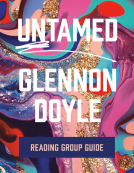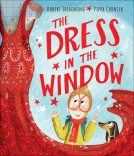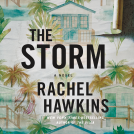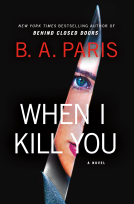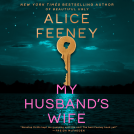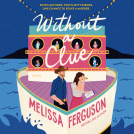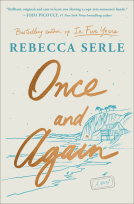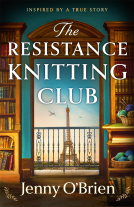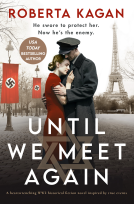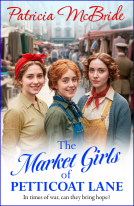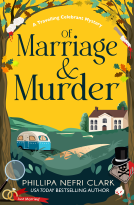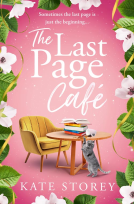
The Woman with the Map
An absolutely unputdownable and heartbreaking WW2 novel
by Jan Casey
This title was previously available on NetGalley and is now archived.
Send NetGalley books directly to your Kindle or Kindle app
1
To read on a Kindle or Kindle app, please add kindle@netgalley.com as an approved email address to receive files in your Amazon account. Click here for step-by-step instructions.
2
Also find your Kindle email address within your Amazon account, and enter it here.
Pub Date Mar 17 2022 | Archive Date Mar 31 2022
Head of Zeus | Aria
Talking about this book? Use #TheWomanwiththeMap #NetGalley. More hashtag tips!
Description
February 1941
The world is at war and Joyce Cooper is doing her bit for the war effort. A proud member of the Civil Defence, it is her job to assist the people of Notting Hill when the bombs begin to fall. But as the Blitz takes hold of London, Joyce is called upon to plot the devastation that follows in its wake. Night after night she must stand before her map and mark the trail of loss and suffering inflicted upon the homes, families and businesses she knows so well.
February 1974
Decades later from her basement flat Joyce watches the world go by above her head. This is her haven; the home she has created for herself having had so much taken from her in the war. But now the council is tearing down her block of flats and she's being forced to move. Could this chance to start over allow Joyce to let go of the past and step back into her life?
An emotional and compelling historical fiction novel perfect for fans of Fiona Valpy, Mandy Robotham and Catherine Hokin.
Readers love Jan Casey:
'Captivating, heart-wrenching'saga... I adamantly recommend' NetGalley Reviewer, ⭐⭐⭐⭐⭐
'A story of courage and hope' NetGalley Reviewer, ⭐⭐⭐⭐⭐
'Drew me in straight away and I just wanted to keep on reading until I finished it' NetGalley Reviewer, ⭐⭐⭐⭐⭐
'Gut-wrenching and hopeful, this book is just beautiful. I stayed riveted the entire time and could not put it down' Goodreads Reviewer, ⭐⭐⭐⭐⭐
'Full of fervour and the characters grow from beginning to end! I could not put the book down!' NetGalley Reviewer, ⭐⭐⭐⭐⭐
'A book that you won't want to put down. I loved all the characters and where this book took me. A lovely read' NetGalley Reviewer, ⭐⭐⭐⭐⭐
'Was desperate to see how it panned out... Very interesting reading it from both sides rather than just your own country. Recommend it' NetGalley Reviewer, ⭐⭐⭐⭐⭐
Available Editions
| EDITION | Ebook |
| ISBN | 9781838930776 |
| PRICE | $5.49 (USD) |
| PAGES | 320 |
Average rating from 29 members
Featured Reviews
A little slow in the beginning but enough to keep you reading. I love the character development and the story of courage.
 Reviewer 789915
Reviewer 789915
"The Woman with the Map" is a very compelling WWII historical fiction piece. In 1941 Joyce Cooper, a member of the Civil Defence, assists people of Notting Hill when the Blitz starts. She must mark the losses and suffering inflicted around surrounding homes and businesses where she lives. The story jumps ahead to 1974 where Joyce hides out in her basement flat. She must come to grips with the row of flats in which she resides being torn down and the fear of having to start over and forget the past. I was enthralled by the plot and felt the heartbreak Joyce endured at the prospect of losing the safety of her living situation and having her life upended. I highly recommend this book to anybody who is a fan of WWII historical fiction.
 Librarian 555814
Librarian 555814
I loved this dual timeline novel! It follows the life of Joyce, both during WWII and later in 1974. Her life during the war is full of happiness, hardship, and heartache. In 1974 she is forced to move to a new apartment from where she has lived for 30 years. Her life has become one of loneliness and routine. At the end she begins to embrace changes to try to bring friendship and happiness back into her lonely life.
 Reviewer 931626
Reviewer 931626
I really enjoyed this book. I had a hard time putting it down. The journey through Joyce's life during WWII was both heartwarming and gut wrenching. The author did an incredible job in making me feel like I was right there with Joyce watching her live out all the love, warmth, loss and stress. I will highly recommend this book to anyone. It has all the emotions wrapped into one great historical fiction.
The Woman with the Map is a dual storyline novel that lingers in your mind a long time after you finish reading it and that is due to the frustration and sadness that the main character evokes in the reader.
The first storyline is set during the Second World War in London. Joyce is a young woman working as a warden and later in the offices of the ARP where her organizing skills lend her a job mapping all the bombings and destructions in her area of the city.
The second parallel storyline is set in the 70s and now we see an older Joyce totally alone, living in an old apartment and being evicted by the council that send a friendly officer to try and persuade her to accept a new apartment.
This second storyline makes you realise from the beginning that things are not going to end well with Joyce and it permeates the all story with a pending doom that honestly made the book harder to read at least for me.
The details and writing are impeccable and it captures the spirit of the time but the story is truly brutal and not for the faint of heart.
I voluntarily reviewed an Advance Reader copy of this book.
 kATHLEEN G, Reviewer
kATHLEEN G, Reviewer
Told in dual time line, this is the story of Joyce, who spent WWII as part of the Civil Defense force- and mapped the locations of deaths from German bombing. Now, in 1974', she's forced to leave the flat where she's lived all the years since- a huge upheaval. This is emotional in so many ways, made all the more so by current events which actually made this hard for me to read in any detached way. Thanks to Netgalley for the ARC. For fans of historical fiction,.
The book opens with Joyce in 1974 receiving urgent mail. She makes a comment that they don't know what urgent means. This sets the tone for the rest of the book and her experiences in 1941. Most of the book is from 1941, and to me that was the most interesting part. As a plotter, Joyce marked the locations of bombs during the Blitz. I can't imagine what that would have been like. The autor does a great job showing us the emotion Joyce feels. This is a little different type of historical fiction novel. It focuses on Joyce in London and does not bring in the outside war.
This is a fascinating book. I've read many WWII historical fiction books and love when I can find a story that is new to me. I had no idea plotters was a job. I also enjoyed Joyce after the war ended and her return to her pre-war life. It is not something included in many WWII historical fiction novels but it is something everyone in a war has to do. They need to return to normal life.
I did not like this book as much as other historical fiction books. I loved the storyline but struggled to stay interested in the writing at times.
 Reviewer 823951
Reviewer 823951
There are few authors who can bring the past to life so compellingly... Brilliant writing and more importantly, riveting reading. This was a brilliant read. Set aside plenty of time to read in without a workday.
 Trudy D, Reviewer
Trudy D, Reviewer
I have one purpose when I read World War 2 historical fiction. I want to know what my relatives went through in order to survive. I want to know what it was like as doodlebugs buzzed overhead. I want to know what it is like to look up and see a Jerry parachuting into the neighborhood. I want to understand their struggles, their determination. The Woman with the Map has given me so many details. I think I am finally beginning to understand why some people are the way they are.
I can't say I enjoyed reading about the V-1 or V-2 and other bombs. What happened was devastating. I do appreciate the insight to what it was like. Reading about the bombs in history books does not describe the devastation that occurred.
The devastating amount of loss gutted me. I can't begin to imagine what it was like to slowly loose all your family members in bombing raids. The survivors would move to a new place only to be blown up again. The sense of hopelessness my have been intense.
The author takes the reader through the struggles of living in war torn London. The reader gets a glimpse of trying to find some sort of normal, trying to find love only to have it taken away. The reader begins to realize that there was no such thing as 9-5. The office of Report and Control had an important job, but I never realized how closely they could be affected.
Years later, survivors are still affected even if they don't realize it. The author was brilliant in weaving the life of Joyce in WW2 with the life of Joyce in 1974. Survivors guilt is a horrible thing. The author made me think. The author had me wanting to know more. What more could I ask of a historical fiction.
 Marcia M, Reviewer
Marcia M, Reviewer
The Woman with the Map brought history alive for me through the eyes of Joyce, a young woman studying accounting at the beginning of WW11. She is chosen to continuously update a map in a giant map showing the damage done to Notting Hill during the blitz raids. Her enthusiasm and energy flew off the pages as I raced through her story.
Interspersed throughout this are chapters from 1974 from an embittered lonely Joyce who has lost almost everything. She endured so very many losses throughout the never ending war.
She stole my heart as she had to overcome each loss - her family - one by one, her love, her dreams, and her numerous homes. This read clearly depicted the daily lives of people living in Notting Hill during the war. I cannot imagine continuously losing everything you own as well as your house so many times. She remained stoic and continued to do her job, which was fascinating to me.
The ending gave me hope that a new life is right around the corner for Joyce.
Many many thanks to Jan Casey, Aria Fiction, and NetGalley for affording me the opportunity to read an arc of this just published gem.
Oh my goodness, did this book put me through the emotional wringer. I’ll freely admit to shedding tears at some points. Alternating between 1974 and the period of the Second World War, we gradually come to see why the devastating losses Joyce experienced during the war have made her the way she is, reluctant to get close to anyone for fear they may disappear from her life and preferring to live a solitary, self-contained existence following her established routines. Her little basement flat has become her sanctuary, the place that gives her a sense of stability. Gradually we come to understand just why it is such a wrench for her to leave it.
The details of Joyce’s wartime work, plotting the location of bombs dropped on London during the Blitz, was fascinating. I was struck by the contrast between the chaos in the streets above and the methodical operation of the Report and Control Centre with its forms, log books and detailed procedures that define the colour of pins to be used to denote the various levels of destruction and casualties, or the precise diameter of the circle to be drawn to identify V1 rockets.
It was impossible to read the descriptions of the horrific damage and loss of life inflicted on London (and other cities) by German bombing raids without thinking of the atrocities being committed in Ukraine at the moment. As the war continues, Joyce’s experiences reflect those of many Londoners during the Blitz – never knowing whether this moment might be your last, homes damaged beyond repair, people desperately scrabbling in the rubble of bombed-out buildings, finding yourself left with just the clothes you stand up in and reliant upon the kindness of strangers, loved ones injured or literally blown to oblivion. And it never stops, for year after year. ‘Everyone was hungry; everyone was cold. They all had spots or skin the colour of the pall of smoke that hung over the city and stomach upsets and earaches and missing fingers and swollen joints…’ Although there are snatched moments of happiness they prove transitory. And, just when you think it can’t get any worse for Joyce, it does. (The chapter headings become positively chilling.)
I fell in love with Joyce and if she were my neighbour I’d want to give her a big hug and join her in a cup of tea and a vanilla slice. Taking the first tentative steps to remove the protective barrier she has built around her takes courage and Joyce proves once again, as she did during the war, that she has it in spades.
The Woman with the Map is one of the most moving books I’ve read for a long time. The parallels with events in Ukraine make it especially poignant and chillingly prophetic. Attending the celebrations at the end of the war, Joyce listens to Winston Churchill proclaiming that in years to come whenever people had their freedom threatened they would look back at the ‘stubborn determination and stoic endurance’ of the British people and say, like them, that they would rather die than be conquered’.
 Julie B, Reviewer
Julie B, Reviewer
Jan Casey’s The Woman with the Map is a complex, immersing and fascinating historical novel of love, loss and courage.
It’s 1941 and the Second World War continues to rage on. Determined to do her bit for king and country, Joyce Cooper joined the Civil Defence where she works tirelessly to assist the people of Notting Hill as Hitler’s bombs relentlessly attack London night after night. With the Blitz continuing to wreak further havoc and destruction, Joyce is called upon to plot the devastation that follows in its wake. With her trusty map, Joyce watches the homes, buildings and businesses that she knows so well being obliterated by war.
Three decades later, Joyce lives in her basement flat where she is perfectly happy to watch the world go by from the safety of her home. Having suffered terrible pain and loss during the war, Joyce’s basement flat is her refuge and her salvation. She cannot imagine ever leaving her safe haven – until she discovers that the council plan to tear down her block of flats and are rehousing her. This unexpected turn of events is a cruel blow for Joyce, but will it provide her with the second chance she so desperately needs? Or will the loss of her beloved home prove to be the final straw for Joyce?
Brilliantly observed, powerfully written and wonderfully poignant, The Woman with the Map is an atmospheric and moving tale of a woman’s journey through life during the twentieth century that cannot fail to touch readers’ hearts. Jan Casey vividly evokes the periods she is writing about and in Joyce has created a brave, bold, flawed and believable heroine whom readers will take to their hearts.
Jan Casey’s The Woman with the Map is high quality historical fiction from a master storyteller.
 Ceri E, Educator
Ceri E, Educator
I am always filled with admiration, but also some nervousness when I begin a historical fiction book with a dual timeline. Though an engaging feature, it takes some talent and planning to ensure that the reader feels both timelines are engaging and worthy, without being able to express a clear preference.
I can confirm that I was easily lost in, and intrigued by, both timelines in this book and can see how they give the book more impact when deliverer together. This is a woman who faces homelessness, placelessness and devastation not once, but twice in her life. The themes and strength of character displayed by Joyce in both scenarios mean that the two timelines seamlessly and effortlessly link.
I was pulled into the story straight away and Jan’s emotional and poignant narrative ensured that I was able to feel a sense of place very early on, as well as the trepidation, dread and anxiety that she surely must have felt in both scenarios. There is no holding back when it comes to putting the reader in direct contact with the horrors and devastation of war. I have felt like I have gone on these tumultuous journeys with Joyce.
I thoroughly enjoyed this poignant and emotional read, and I will definitely be looking to read more by this author in future.
 Alayne E, Reviewer
Alayne E, Reviewer
I loved this dual time-line. It was so different from the usual WW2 books as it dealt with the women who risked their lives during the blitz and worked through the night to help people and then went to their jobs during the day without having any sleep. Set in 1941 and 1974 this was such an interesting book and I was sad to finish it. My thanks to Netgalley and the publishers for giving me the opportunity to read this book in return for an honest review.
Readers who liked this book also liked:
Jenny O'Brien
General Fiction (Adult), Historical Fiction, Women's Fiction
Phillipa Nefri Clark
General Fiction (Adult), Mystery & Thrillers, True Crime
